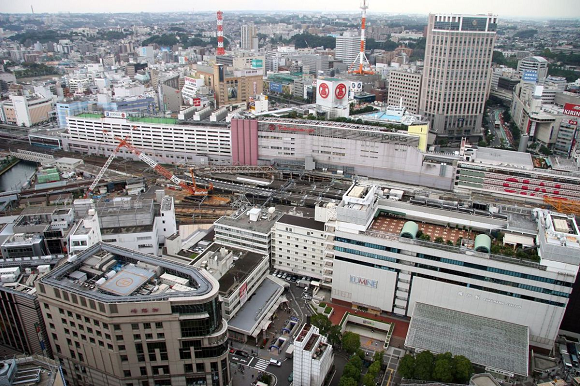
Tokyo’s much-ballyhooed Kichijoji only makes it to number-three, while an outsider with easy access to Tokyo takes the top spot.
While Tokyo is the biggest city in all of Japan, from street-level it often feels like several different towns mashed together. Neighborhoods just a train stop away from each other can have very different atmospheres, and choosing a community that offers a vibe you enjoy, as well as a manageable commute to work or school, can really affect your quality of life.
Suumo, one of Japan’s largest real estate agencies, recently polled 7,000 people living in Tokyo or the nearby prefectures of Kanagawa, Chiba, Saitama, and Ibaraki, asking them which neighborhood in Kanto (east Japan) they want to live in (specifically which train station they’d like to live close to). Let’s take a look at the top eight responses:
8. Meguro
Meguro has a lot going for it. As a stop on the Yamanote loop rail line that circles downtown Tokyo, it’s hard to get much more centrally located. At the same time, Meguro exists in one of the remaining quiet spots on the Yamanote, with far fewer towering high-rises and drunken revelers than other stops. It’s also a connecting station for the Tokyu train and Meguro and Namboku subway lines, providing quick access both deeper into downtown and out towards the suburbs.
7. Shinjuku
Yes, Shinjuku (another Yamanote stop) is the busiest station in all of Japan, but for good reason. In addition to ample office space, the neighborhood offers as much entertainment variety as you’ll find anywhere in Japan, with block after block of shopping, dining, and carousing opportunities. Other perks include being able to see some of the country’s most creative advertising (like the giant exhibition of anime eye artwork currently gracing the station’s walls), and also the chance to rub shoulders with the SoraNews24 staff as we make our way too and from our nearby headquarters.
6. Musashi Kosugi
Few neighborhoods have gone through a more dramatic transformation in recent years than Musako, as the locals call it. Not long ago, the area outside the east side of this station in Kawasaki, Tokyo’s southern neighbor, was all factories, but they’ve been replaced with sparkling new condominiums and multiple entertainment complexes. Kawasaki’s blue-collar image means rent here is often less expensive than in Tokyo, even though Tokyo’s iconic Shibuya Station is only about 15 minutes away by direct train, and you’ll also be able to brag to your friends that our neighborhood was attacked by the King of the Monsters himself in Shin Godzilla.
5. Ikebukuro
Located along the northwest stretch of the Yamanote, Ikebukuro has long existed in the shadow of the trendier Shinjuku and Shibuya. Gradually, though, it’s earned a reputation as a fun slice of downtown, with multiple movie theaters, an aquarium, 60th-floor observation deck, and the venues of several cool anime fan events, such as the Ranma 1/2 Cafe we recently visited. The west side of the station has also become a sort of de facto Chinatown, with gourmands saying it features some of Tokyo’s most authentic Chinese restaurants.
4. Shinagawa
Yet another Yamanote station, Shinagawa has a buttoned-down image, with much of its daytime population made up of white-collar workers who stream into the offices of major corporations like Sony. But unlike many other salaryman-centric towns, Shinagawa isn’t covered with drunks griping about work after they punch out, as many head elsewhere to drown their sorrows. The high-speed Shinkansen also stops at Shinagawa, making it a great place for travel lovers to live, as is the fact that it’s connected directly by train with Haneda Airport.
3. Kichijoji
Just about every time Kichijoji comes up in conversation, someone will mention how it’s “the number-one neighborhood Tokyoites want to live in!” The district frequently tops such polls thanks to having a cosmopolitan image (delicious independent restaurants are clustered around the station) while lying outside the hustle and bustle of central Tokyo, since the station sits about 15 minutes by train west of Shinjuku. Other nearby attractions include Inokashira Park, one of Tokyo’s best cherry blossom viewing spots, and the Ghibli museum.
2. Ebisu
Our last visit to the Yamanote Line comes with Ebisu, which is nestled between the too-quiet-for-some-people’s-tastes Meguro and too-noisy-for-other-people’s-tastes Shibuya. Ebisu is often described as “a town for adults,” and it definitely exudes an air of refinement and class, even when you’re tipping back a cold brew at the Ebisu Beer Museum.
1. Yokohama
Sitting at the top of Suumo’s chart is Yokohama, which is two cities to the south of Tokyo but only about 30 minutes from downtown Tokyo by train. In another dichotomy, despite being the second-largest city (population-wise) in Japan, Yokohama has a reputation as a relaxed, coastal town caressed by coastal winds blowing in from its expansive port.
The area immediately surrounding Yokohama Station is packed with dining and shopping options, but day-trippers to the town might argue that it lacks the charm of the city’s Minato Mirai harbor district. It’s also worth pointing out that the decidedly urban-feeling Yokohama Station got heavy support from survey participants currently living in Kanagawa Prefecture (of which Yokohama is the capital), who gave it 52.4 percent of its votes, no doubt in part because it’s large enough to provide many work and leisure options, but also closer to Tokyo than Minato Mirai Station for those who are commuting into Tokyo daily. And on days off, or even after work, Minato Mirai is less than 10 minutes away by train, meaning that it’s close enough to go see the annual Pikachu parades that are held every summer as often as you want.
Source: Suumo
Top image: Wikipedia/Halfd
Insert images: Pakutaso (1, 2), Wikipedia/ペン太, Wikipedia/Stevec240, Pakutaso (3), SoraNews24, Pakutaso (4, 5)
[ Read in Japanese ]
Follow Casey on Twitter, where he likes his friend’s description of Kanagawa as “the California of Japan.”

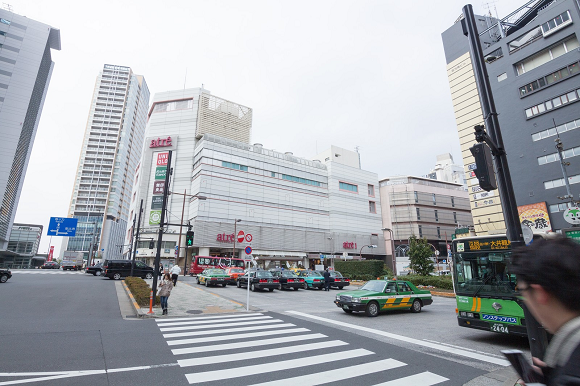
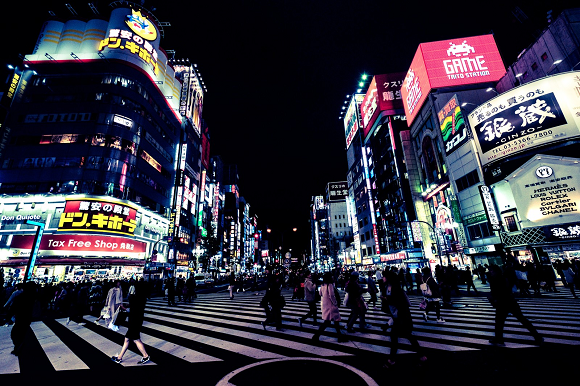
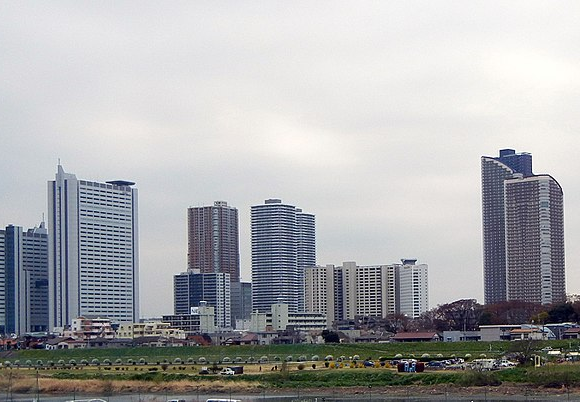
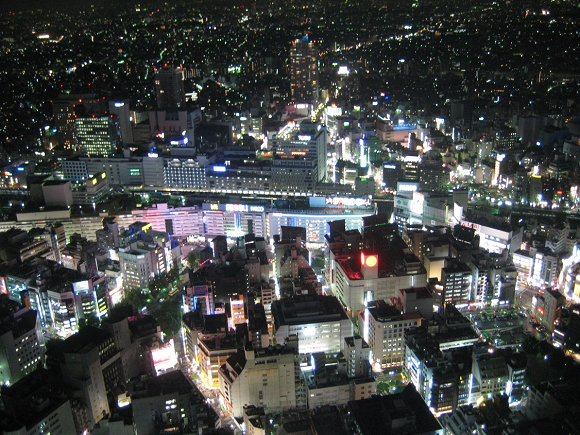
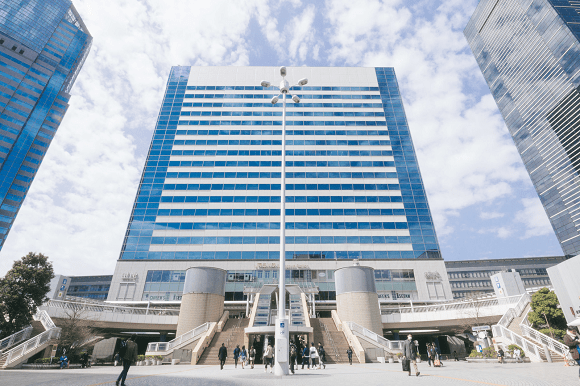
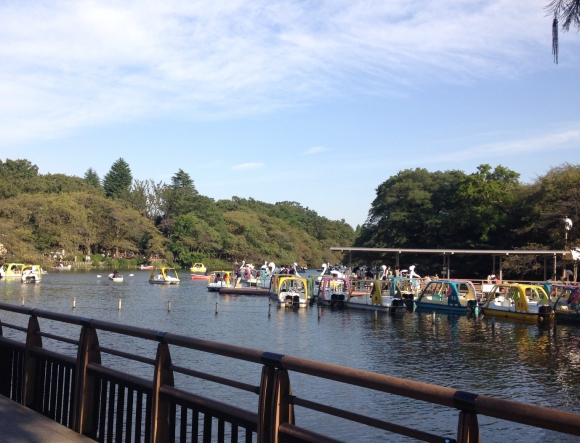
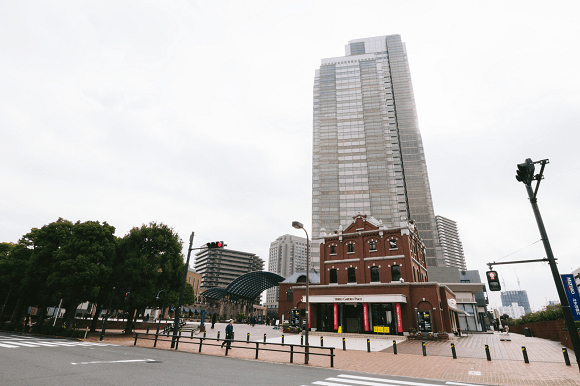
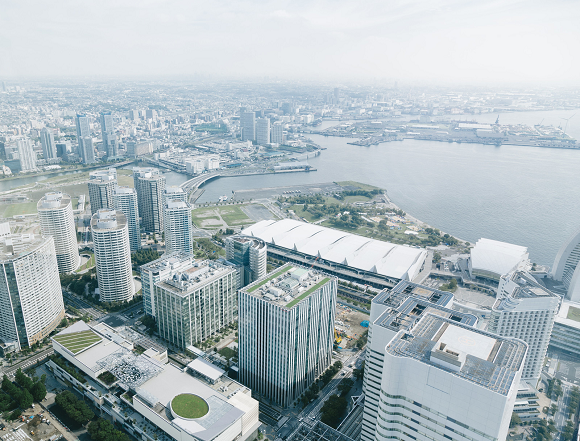
 What’s the best part of Tokyo to live in, and why? Survey gives the top six picks
What’s the best part of Tokyo to live in, and why? Survey gives the top six picks Yokohama ranks as most desirable city for living in Kanto for the second year in a row
Yokohama ranks as most desirable city for living in Kanto for the second year in a row The 10 best places for young, single people to live in and around Tokyo【Survey】
The 10 best places for young, single people to live in and around Tokyo【Survey】 Why are people in their 20s moving outside of Tokyo to Yokohama and other areas?
Why are people in their 20s moving outside of Tokyo to Yokohama and other areas? How much money do you need for a studio apartment in downtown Tokyo?
How much money do you need for a studio apartment in downtown Tokyo? Tokyo cafe offers all-you-can-eat pancakes for less than ten bucks!
Tokyo cafe offers all-you-can-eat pancakes for less than ten bucks! That time Seiji called JASRAC to ask why he didn’t get paid royalties for his song being on TV
That time Seiji called JASRAC to ask why he didn’t get paid royalties for his song being on TV Eating all the cat treats at Japanese convenience store Family Mart
Eating all the cat treats at Japanese convenience store Family Mart Pikachu-ear engagement rings and Pokémon wedding rings for him and her can now be yours【Photos】
Pikachu-ear engagement rings and Pokémon wedding rings for him and her can now be yours【Photos】 7-Eleven Japan’s ramen-cooking robot whipped us up a bowl of noodles【Taste test】
7-Eleven Japan’s ramen-cooking robot whipped us up a bowl of noodles【Taste test】 Harajuku’s new permanent Tamagotchi shop is filled with cuteness and a surprising lack of poop
Harajuku’s new permanent Tamagotchi shop is filled with cuteness and a surprising lack of poop First Kit Kat Chocolatery shop with cafe opens in Kyoto! New Chocolatery items released too
First Kit Kat Chocolatery shop with cafe opens in Kyoto! New Chocolatery items released too The roller slide of terror: Treetop fun ride for kids is a terrifying experience for adult butts
The roller slide of terror: Treetop fun ride for kids is a terrifying experience for adult butts Cup Noodle tries an authentic Jiro-style ramen, but something’s not quite right
Cup Noodle tries an authentic Jiro-style ramen, but something’s not quite right 17 new designs unveiled in round two of regional Japanese license plates
17 new designs unveiled in round two of regional Japanese license plates Starbucks Japan ready to get Year of the Horse started with adorable drinkware and plushies【Pics】
Starbucks Japan ready to get Year of the Horse started with adorable drinkware and plushies【Pics】 7 great places to see Mt. Fuji from without having to climb it
7 great places to see Mt. Fuji from without having to climb it Cyberpunk anime meets traditional culture in Ghost in the Shell gold leaf Japanese changing screens
Cyberpunk anime meets traditional culture in Ghost in the Shell gold leaf Japanese changing screens Hayao Miyazaki says Happy New Year to Studio Ghibli fans with new art for Year of the Horse
Hayao Miyazaki says Happy New Year to Studio Ghibli fans with new art for Year of the Horse Hello Kitty Choco Egg figures are an adorable trip through three periods of Japanese pop culture【Pics】
Hello Kitty Choco Egg figures are an adorable trip through three periods of Japanese pop culture【Pics】 We found possibly the quietest Japanese-style hotel in Tokyo’s bustling Shinjuku district
We found possibly the quietest Japanese-style hotel in Tokyo’s bustling Shinjuku district Sumo Sanrio! Hello Kitty and pals team up with Japan Sumo Association for new merch【Pics】
Sumo Sanrio! Hello Kitty and pals team up with Japan Sumo Association for new merch【Pics】 Japan’s oldest largetooth sawfish in captivity back on display in Mie Prefecture
Japan’s oldest largetooth sawfish in captivity back on display in Mie Prefecture More Than a Capsule Stay: Why Solo Travelers Choose “global cabin Yokohama Chinatown”
More Than a Capsule Stay: Why Solo Travelers Choose “global cabin Yokohama Chinatown” 7-Eleven Japan starts new temporary luggage storage service in over 300 branches
7-Eleven Japan starts new temporary luggage storage service in over 300 branches Disillusionment at Tsukiji’s tourist-target prices led us to a great ramen restaurant in Tokyo
Disillusionment at Tsukiji’s tourist-target prices led us to a great ramen restaurant in Tokyo Starbucks teams up with 166-year-old Kyoto doll maker for Year of the Horse decorations【Photos】
Starbucks teams up with 166-year-old Kyoto doll maker for Year of the Horse decorations【Photos】 Tokyo considering law requiring more trash cans following litter increase in heavily touristed area
Tokyo considering law requiring more trash cans following litter increase in heavily touristed area Tokyo’s Tsukiji sushi neighborhood asks tour groups to stay away for the rest of the month
Tokyo’s Tsukiji sushi neighborhood asks tour groups to stay away for the rest of the month Tokyo event lets you travel back in time, for free, to celebrate 100 years since Showa era start
Tokyo event lets you travel back in time, for free, to celebrate 100 years since Showa era start Sanrio theme park in Japan announces plans to expand into a Sanrio resort
Sanrio theme park in Japan announces plans to expand into a Sanrio resort Japan may add Japanese language proficiency, lifestyle classes to permanent foreign resident requirements
Japan may add Japanese language proficiency, lifestyle classes to permanent foreign resident requirements Stamina-destroying “Paralysis Noodles” are Tokyo’s newest over-the-top ramen innovation
Stamina-destroying “Paralysis Noodles” are Tokyo’s newest over-the-top ramen innovation Survey asks foreign tourists what bothered them in Japan, more than half gave same answer
Survey asks foreign tourists what bothered them in Japan, more than half gave same answer Japan’s human washing machines will go on sale to general public, demos to be held in Tokyo
Japan’s human washing machines will go on sale to general public, demos to be held in Tokyo Japan’s deadliest food claims more victims, but why do people keep eating it for New Year’s?
Japan’s deadliest food claims more victims, but why do people keep eating it for New Year’s? We deeply regret going into this tunnel on our walk in the mountains of Japan
We deeply regret going into this tunnel on our walk in the mountains of Japan Studio Ghibli releases Kodama forest spirits from Princess Mononoke to light up your home
Studio Ghibli releases Kodama forest spirits from Princess Mononoke to light up your home Major Japanese hotel chain says reservations via overseas booking sites may not be valid
Major Japanese hotel chain says reservations via overseas booking sites may not be valid Put sesame oil in your coffee? Japanese maker says it’s the best way to start your day【Taste test】
Put sesame oil in your coffee? Japanese maker says it’s the best way to start your day【Taste test】 No more using real katana for tourism activities, Japan’s National Police Agency says
No more using real katana for tourism activities, Japan’s National Police Agency says Starbucks Japan reveals new sakura drinkware collection, inspired by evening cherry blossoms
Starbucks Japan reveals new sakura drinkware collection, inspired by evening cherry blossoms Updated cherry blossom forecast shows extra-long sakura season for Japan this year
Updated cherry blossom forecast shows extra-long sakura season for Japan this year 11 cheapest Tokyo neighborhoods to rent an apartment in show living here’s not an impossible dream
11 cheapest Tokyo neighborhoods to rent an apartment in show living here’s not an impossible dream Moving to Tokyo? Real estate agent picks five best neighborhoods for single residents
Moving to Tokyo? Real estate agent picks five best neighborhoods for single residents Moving to Tokyo? Here are the three best, most reasonable neighborhoods to live in
Moving to Tokyo? Here are the three best, most reasonable neighborhoods to live in Top 10 areas in Japan’s capital region where women who live on their own want to live
Top 10 areas in Japan’s capital region where women who live on their own want to live Which Japanese city is gaining interest among families and renters? Hint: it’s not in Tokyo
Which Japanese city is gaining interest among families and renters? Hint: it’s not in Tokyo These are the 11 most crowded trains in Japan…and surprise! They’re all in the Tokyo area
These are the 11 most crowded trains in Japan…and surprise! They’re all in the Tokyo area Downtown Tokyo set to open its most important train station in 50 years, and now it has a name
Downtown Tokyo set to open its most important train station in 50 years, and now it has a name How much money do you need to live in your own apartment in Japan?【Survey】
How much money do you need to live in your own apartment in Japan?【Survey】 Tokyo’s busiest train line to be partially shut down this weekend as part of Shibuya renovations
Tokyo’s busiest train line to be partially shut down this weekend as part of Shibuya renovations Five of the worst areas to live in and around Tokyo
Five of the worst areas to live in and around Tokyo Tokyo travel alert: City’s most important train line shutting down for construction this weekend
Tokyo travel alert: City’s most important train line shutting down for construction this weekend The top 10 drinking districts in Tokyo, as recommended by Japanese locals
The top 10 drinking districts in Tokyo, as recommended by Japanese locals Tokyo is the best city in the world to live in, study says
Tokyo is the best city in the world to live in, study says Tokyo’s Shibuya losing popularity as a place to go drinking, drops out of top 10 in survey
Tokyo’s Shibuya losing popularity as a place to go drinking, drops out of top 10 in survey
Leave a Reply